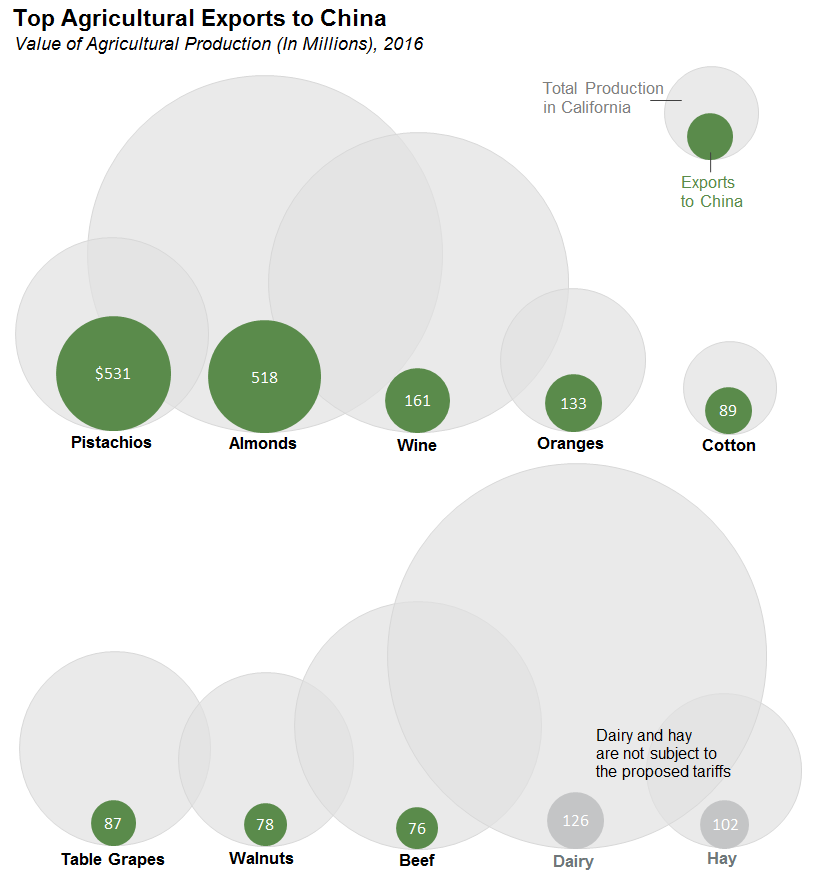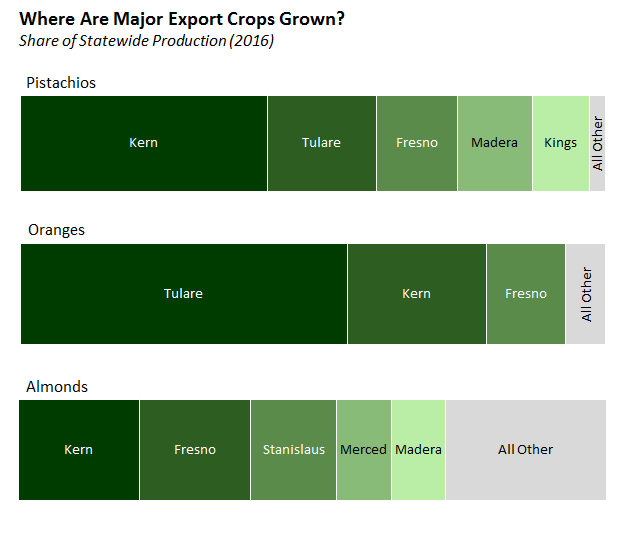In recent months, the United States and China have engaged in a series of back-and-forth threats to impose tariffs—taxes on imported goods—on goods commonly traded between the U.S. and China. To date, China has imposed tariffs on 128 items exported from the US to China and has proposed tariffs on an additional 106 items. These tariffs range from 15 to 25 percent.
Tariffs on U.S. goods exported to China make these goods more expensive for Chinese consumers. This reduces how much of these U.S. goods Chinese consumers want to buy. Faced with this reduced demand, U.S. businesses that export to China may have to shift some of their sales to other parts of the world. These shifts, in turn, could result in higher costs or lower revenues, reducing profits of U.S. exporters.
The majority of the Chinese tariffs fall on U.S. agricultural products, many of which California is a major producer. It is too early to gauge exactly how the tariffs will impact California agricultural producers. However, we can get a sense of the scale of the potential impact by looking at the share of agricultural production in California that is exported to China. The figure below shows data for 2016 on the top ten agricultural exports from California to China. Overall, exports to China make up about 8 percent of the state’s total production of these goods. Exports to China make up a more notable share of total product of a few major California crops—such as pistachios (around 35 percent) and oranges (16 percent).
The effects of the tariffs likely will hit the Central Valley the hardest. The figure below shows where the bulk of three impacted crops (pistachios, oranges, and almonds) are grown in California. Production of these crops is concentrated Fresno, Kern, and Tulare counties.


